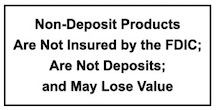Planning for your retirement can be confusing and overwhelming when you look at all the various IRAs and employer-sponsored plans. In this article, you’ll learn the similarities and differences between two common employee-sponsored retirement plans: the 401(k) and the 403(b).
How the 401(k) and 403(b) Work
Both the 401(k) and 403(b) allow you to defer a portion of your wages into a retirement account. You specify the amount you want to contribute, and your employer withholds it from your salary pre-tax. Although the government considers your contribution as wages for Social Security, Medicare, and federal unemployment tax purposes, it does not include the money as income.
In 2020, you can contribute up to $19,500 into either a 401(k) or 403(b) for the year. If you’re age 50 or older, you can make an additional catch-up contribution up to $6,500.
A retirement plan provider will manage your account, but you have some input into how your retirement plan funds are invested. You are 100 percent vested in the interest earned from your deferred wages. That means if you leave your job, your total contribution amount and the interest it earns are yours to roll over into a new employer retirement plan or a personal retirement account.
With both plans, your employer has the option to match your contribution. The amount an employer matches is usually calculated on the dollar up to a certain percent of the employee’s contribution.
For example, let’s say that you defer 10 percent of your earnings into a 401(k). Your employer might match your contribution dollar for dollar up to five percent and another 50 cents for every dollar up to seven percent. Therefore, if you contribute $1,000, your employer will match it for a total of $600. However, your employer may require you to remain at the company for a specified length of time to become vested in the matched funds. If you leave your job before then, your employer’s contributions would then go back to the company.
Finally, the earnings from the investments are not taxed until you withdraw funds from your account. If you withdraw money from your retirement account before the age of 59½ without rolling it over into another type of retirement account, not only will you have to pay taxes but you will assess a 10 percent penalty fee as well.
401(k) Plans
The 401(k) plan is the most common retirement plan available from most employers. Only private companies can offer a 401(k), although some non-profits may be able to offer it, too. In addition to matching your 401(k) deferments, your employer may also offer some type of profit-sharing program as part of the plan.
There are three types of 401(k) plans: traditional 401(k) plans, safe harbor 401(k) plans, and SIMPLE 401(k) plans. All have different rules and regulations, so be sure you understand the type of 401(k) plan you have. For example, with a SIMPLE 401(k) plan, the maximum annual contribution is limited to $13,500 and $3,000 for catch-ups. Your employer or benefits administrator should provide you with detailed information about your 401(k) plan when you enroll.
403(b) Tax-Sheltered Annuity Plans
The 403(b) is also known as a tax-sheltered annuity (TSA) plan. This plan works similar to a 401(k) except that private employers cannot offer it. Only employees of public schools and tax-exempt or 501(c)(3) organizations can participate in a 403(b) plan. Moreover, whereas 401(k) plans can invest in any type of fund, 403(b) plans may only invest in funds offered by a registered investment company as defined by the 1940 Securities and Exchange Act.
With most 403(b) plans, an employer won’t match your contribution for legal reasons. This is because as a non-profit or not-for-profit entity, the company may not have the financial resources.
However, unlike 401(k) plans, 403(b) plans often allow employees to vest more quickly if not immediately. Also, if you have been with your employer for at least 15 years and have contributed an average of $5,000 or less annually, you are allowed to make an additional catch-up provision of $3,000 each year of employment.
Final Words
For the most part, you won’t have any control over what type of retirement plan your employer offers. What’s important is that you participate to prepare for a worry-free financial future. And if your employer matches your contributions, defer as much as of your salary as you can afford into your plan. Otherwise, you’re turning down free money!






